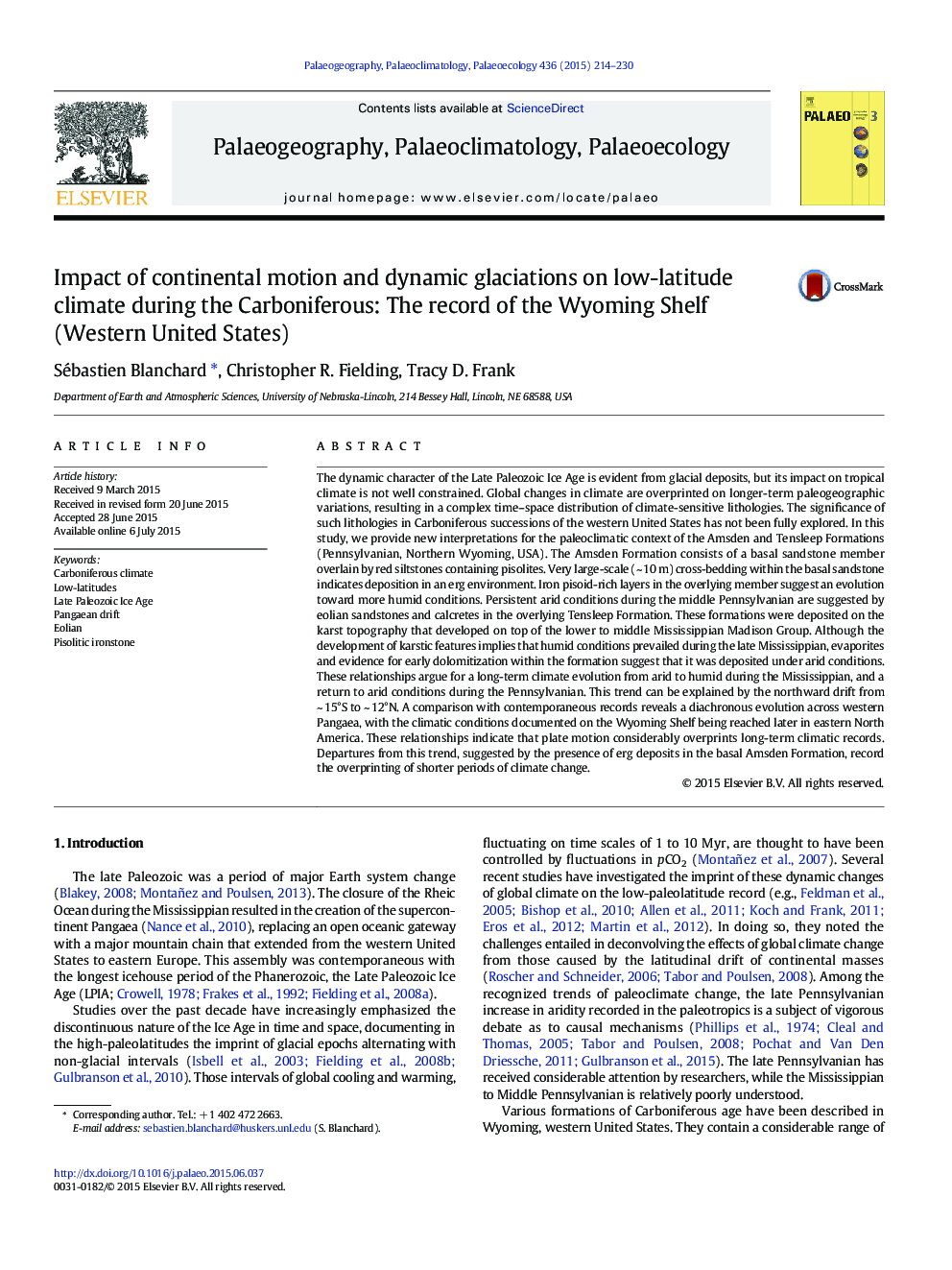| کد مقاله | کد نشریه | سال انتشار | مقاله انگلیسی | نسخه تمام متن |
|---|---|---|---|---|
| 4465907 | 1622154 | 2015 | 17 صفحه PDF | دانلود رایگان |

• Paleoclimatic context in which Carboniferous formations of Wyoming were deposited is investigated.
• Long-term climate change is linked to Pangaea's motion through climate belts.
• Tropical, humid conditions in the western United States predates the development of extensive forested wetlands in eastern North America and Europe.
• Persistent arid conditions prevailed during the middle to late Pennsylvanian.
The dynamic character of the Late Paleozoic Ice Age is evident from glacial deposits, but its impact on tropical climate is not well constrained. Global changes in climate are overprinted on longer-term paleogeographic variations, resulting in a complex time–space distribution of climate-sensitive lithologies. The significance of such lithologies in Carboniferous successions of the western United States has not been fully explored. In this study, we provide new interpretations for the paleoclimatic context of the Amsden and Tensleep Formations (Pennsylvanian, Northern Wyoming, USA). The Amsden Formation consists of a basal sandstone member overlain by red siltstones containing pisolites. Very large-scale (~ 10 m) cross-bedding within the basal sandstone indicates deposition in an erg environment. Iron pisoid-rich layers in the overlying member suggest an evolution toward more humid conditions. Persistent arid conditions during the middle Pennsylvanian are suggested by eolian sandstones and calcretes in the overlying Tensleep Formation. These formations were deposited on the karst topography that developed on top of the lower to middle Mississippian Madison Group. Although the development of karstic features implies that humid conditions prevailed during the late Mississippian, evaporites and evidence for early dolomitization within the formation suggest that it was deposited under arid conditions. These relationships argue for a long-term climate evolution from arid to humid during the Mississippian, and a return to arid conditions during the Pennsylvanian. This trend can be explained by the northward drift from ~ 15°S to ~ 12°N. A comparison with contemporaneous records reveals a diachronous evolution across western Pangaea, with the climatic conditions documented on the Wyoming Shelf being reached later in eastern North America. These relationships indicate that plate motion considerably overprints long-term climatic records. Departures from this trend, suggested by the presence of erg deposits in the basal Amsden Formation, record the overprinting of shorter periods of climate change.
Journal: Palaeogeography, Palaeoclimatology, Palaeoecology - Volume 436, 15 October 2015, Pages 214–230